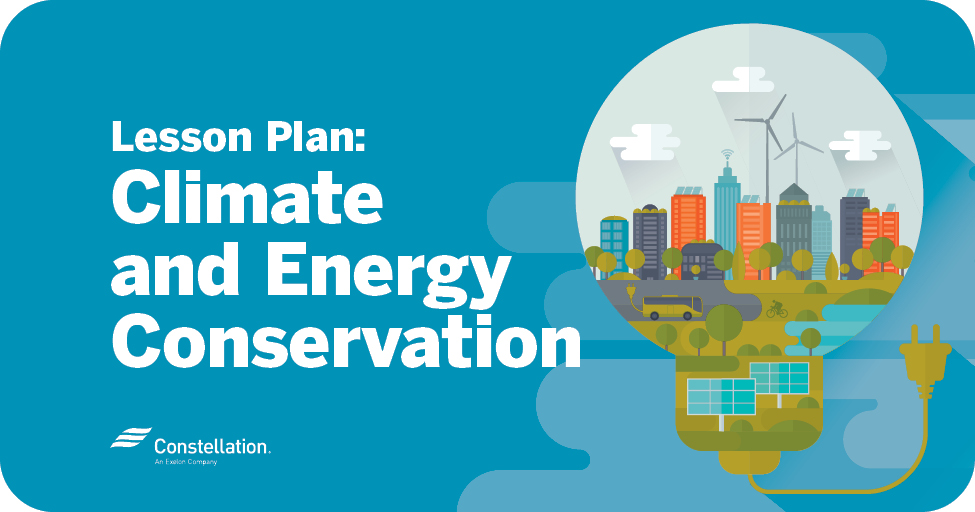
- Category:
Energy Efficiency -
Last updated:
March 28, 2022
Lesson Plan: Climate Change & Energy Conservation
This lesson will help students and families consider their use of energy in all parts of their daily lives and how energy consumption can contribute to a climate conundrum. From powering cars and devices, to providing the “stuff” we use throughout our day, energy consumption is a major contributor to the emissions of carbon dioxide and methane – two gases we know contribute to warming in our atmosphere. Students will first explore some basic text about energy savings and climate science (as appropriate for each grade level). Reinforcing activities on climate change and energy conservation will help students to think about their own energy consumption as they begin to consider conservation behaviors as way to reduce their carbon impacts. A culminating activity will encourage families to consider their role in climate action as they survey how they play a part in carbon dioxide production.
Looking for more home energy activities? We’re pleased to work with The National Energy Education Development Project (NEED), to deliver these fun activities. Be sure to check out their library of resources, and their specialized collection of energy-themed distance/at-home learning activities. All activities are totally free for use at home or school, and accessible by visiting their website, www.NEED.org.

- Background reading: Elementary Energy Infobook, Saving Energy
- Printable Worksheet: 4R Barista

- Background reading: Intermediate Energy Infobook, Climate Change
- Printable Activity: Electricity and Carbon Dioxide
Think Critically!
This activity doesn’t involve manipulating hands-on materials, but it does ask your students, family, or household to work together to consider carbon dioxide and how your own behaviors and choices can contribute to climate change, even on a small scale. Carbon in My Life will introduce students to the ways in which carbon dioxide is produced in the various ways we go about our day. Students are then asked to complete a survey to consider simple actions and if CO2 is produced or involved in any way. As they continue through the activity, they will continue to study items and responses from their own surveys to identify ways in which they could practice energy conservation by lowering their carbon impacts, or “carbon footprint.”
Additional Support Links:
- https://switchon.org/ (Free signup for all video clips)
- https://www.eia.gov/energyexplained/
- https://www.eia.gov/kids/
Fall Lesson Plans:
- Lesson Plan 1: Biomass
- Lesson Plan 2: Hydropower
- Lesson Plan 3: Water Conservation
- Lesson Plan 5: Heating and Cooling
Spring Lesson Plans:
- Lesson Plan 1: Energy Basics and Energy Sources
- Lesson Plan 2: Electricity and Electricity Generation
- Lesson Plan 3: Conservation at Home
- Lesson Plan 4: Wind and Natural Gas
- Lesson Plan 5: Solar Energy
- Lesson Plan 6: Understanding Your Energy Bill
- Lesson Plan 7: Measuring Your Electricity Consumption
- Lesson Plan 8: Lighting and Appliances




